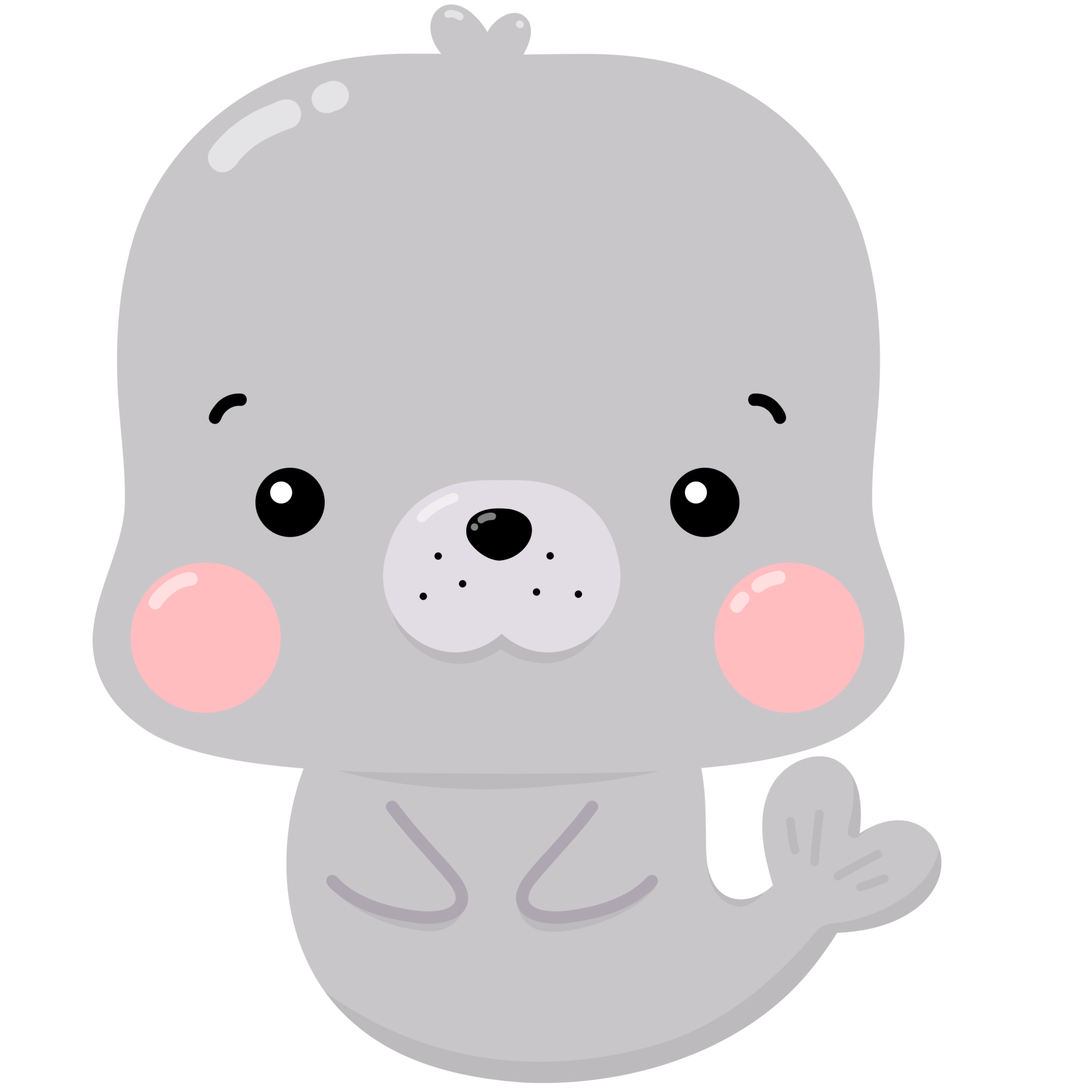Baby Seal Found In Connecticut: A Heartwarming Story That Captured The Hearts Of Many
Imagine this: you're taking a peaceful walk along the shoreline of Connecticut, enjoying the gentle breeze and the sound of waves crashing against the shore. Suddenly, you spot something unusual—a baby seal stranded on the beach. What do you do? This heartwarming story has captured the attention of many, and today, we're diving deep into the fascinating tale of a baby seal found in Connecticut.
This is not just another animal story; it’s a powerful reminder of the importance of wildlife conservation, community involvement, and the incredible bond between humans and nature. So, grab a cup of coffee, get comfy, and let’s explore this incredible journey together.
From the moment the baby seal was discovered, it sparked a wave of curiosity and concern among locals and wildlife enthusiasts. But what exactly happened? Why was the seal found so far from its natural habitat? And most importantly, how did it survive? Let’s find out!
- Ice Spice Ozempic Rumors See Her Workout Weight Loss Journey
- Natasha Richardson Her Best Movies Legacy Revealed
Daftar Isi
- The Discovery of the Baby Seal
- Why Was the Baby Seal Found in Connecticut?
- The Role of Marine Wildlife Organizations
- How the Community Reacted
- What Happens Next?
- Fun Facts About Baby Seals
- Threats to Baby Seals in the Wild
- Conservation Efforts Around the World
- Lessons We Can Learn
- How You Can Help Protect Marine Wildlife
The Discovery of the Baby Seal
It all began on a crisp autumn morning when a local resident, Sarah Thompson, was out for her daily jog along the coast of Greenwich, Connecticut. She noticed something unusual—a small, furry creature lying motionless on the sand. At first, she thought it was just a rock or maybe some driftwood, but as she approached, her heart skipped a beat. It was a baby seal, stranded and seemingly alone.
Sarah quickly called the local marine wildlife organization, who arrived within minutes to assess the situation. The baby seal, later named "Hope," was weak but still alive. The discovery sent ripples through the community, sparking a wave of interest and concern about marine wildlife in the area.
What Did the Experts Say?
Marine biologists were intrigued by the sighting, as seals are not commonly found in Connecticut waters. Some suggested that the seal might have been swept away by strong currents, while others believed it could have been separated from its pod due to environmental factors. Whatever the reason, one thing was clear: Hope needed help.
- Green Bay Packers In Pitch Perfect 2 The Hilarious Cameo
- Penelope Cruz Nude Scenes Then And Now Shocking
Why Was the Baby Seal Found in Connecticut?
Connecticut is not exactly known for its seal population, so why was this baby seal found here? Experts believe that climate change and shifting ocean currents could be contributing factors. Warmer waters and changing weather patterns have caused many marine species to migrate to new areas in search of food and shelter.
Additionally, human activities such as overfishing and pollution have disrupted the natural balance of marine ecosystems, forcing animals like seals to travel farther for survival. This is a concerning trend that highlights the urgent need for conservation efforts worldwide.
Key Factors Contributing to the Stranding
- Climate change and rising sea temperatures
- Strong ocean currents
- Human activities such as pollution and overfishing
- Possible separation from its pod
The Role of Marine Wildlife Organizations
When Hope was discovered, the local marine wildlife organization sprang into action. Their team of experts carefully transported the seal to a rehabilitation center, where it received round-the-clock care. The organization, which specializes in rescuing and rehabilitating marine animals, played a crucial role in ensuring Hope's survival.
Thanks to their efforts, Hope regained her strength and was eventually released back into the wild. This story is a testament to the dedication and hard work of marine wildlife organizations around the world.
How Do These Organizations Operate?
Marine wildlife organizations rely on donations, volunteers, and partnerships with government agencies to fund their operations. They conduct research, provide education, and advocate for policies that protect marine life. Their work is vital in preserving the delicate balance of ocean ecosystems.
How the Community Reacted
The discovery of the baby seal sparked a wave of interest and concern among the local community. Residents rallied together to support the rescue efforts, organizing fundraisers and volunteering their time to help. The story of Hope quickly spread on social media, capturing the hearts of people across the globe.
This outpouring of support highlights the power of community involvement in conservation efforts. When people come together, they can make a real difference in protecting the environment and the creatures that depend on it.
Community Initiatives
- Fundraising events to support marine wildlife organizations
- Educational programs to raise awareness about marine conservation
- Cleanup drives to reduce pollution in coastal areas
What Happens Next?
Now that Hope has been successfully released back into the wild, what happens next? While her immediate future looks bright, the long-term survival of seals and other marine animals depends on our collective efforts to protect their habitats. This includes reducing pollution, combating climate change, and promoting sustainable fishing practices.
Experts are closely monitoring the situation to gather data on seal populations in the area and identify potential threats. This information will be used to inform future conservation strategies and ensure the survival of these magnificent creatures.
Monitoring and Research
Ongoing research is essential in understanding the behavior and habitat of seals. Scientists use advanced technology such as satellite tagging and drones to track the movements of seals and gather valuable data. This information helps them develop effective conservation strategies and predict potential threats.
Fun Facts About Baby Seals
Baby seals, also known as pups, are fascinating creatures with unique characteristics. Here are some fun facts you might not know:
- Baby seals are born with a thick layer of blubber that helps them stay warm in cold water
- They can swim within hours of being born
- Seal pups are weaned after about three weeks and must learn to fend for themselves
- Seals communicate with each other using a variety of vocalizations, including barks and grunts
Did You Know?
Seals belong to the family Phocidae and are found in oceans all over the world. They are highly intelligent and social animals, often forming tight-knit groups called colonies. Despite their playful nature, seals face numerous threats in the wild, making conservation efforts all the more important.
Threats to Baby Seals in the Wild
While baby seals are adorable and captivating, they face numerous threats in the wild. From predators to pollution, these vulnerable creatures need our protection to survive. Here are some of the main threats they face:
- Predation by sharks and other marine animals
- Entanglement in fishing gear and plastic waste
- Habitat loss due to coastal development
- Climate change and rising sea levels
What Can We Do?
There are several ways we can help protect baby seals and other marine animals. Reducing plastic waste, supporting sustainable fishing practices, and advocating for policies that protect marine habitats are just a few examples. Every small action counts in the fight to preserve our planet's biodiversity.
Conservation Efforts Around the World
Conservation efforts to protect seals and other marine animals are underway in many parts of the world. From establishing marine protected areas to implementing stricter regulations on fishing practices, governments and organizations are taking steps to ensure the survival of these incredible creatures.
In addition to these efforts, education and awareness campaigns are crucial in engaging the public and inspiring action. By working together, we can create a brighter future for marine wildlife and the ecosystems they depend on.
Success Stories
There are many success stories in marine conservation, from the recovery of seal populations in certain areas to the establishment of large marine protected areas. These achievements demonstrate the power of collective action and the importance of continued efforts to protect our oceans.
Lessons We Can Learn
The story of the baby seal found in Connecticut offers valuable lessons about the importance of wildlife conservation and the impact of human activities on the environment. It reminds us that even small actions can make a big difference in protecting the planet and its inhabitants.
By learning from this experience, we can take steps to reduce our environmental footprint and promote sustainable practices in our daily lives. Together, we can create a world where humans and wildlife can coexist in harmony.
Key Takeaways
- Climate change and human activities are major threats to marine wildlife
- Community involvement and conservation efforts are crucial in protecting marine ecosystems
- Every small action counts in the fight to preserve biodiversity
How You Can Help Protect Marine Wildlife
So, what can you do to help protect marine wildlife like seals? Here are a few suggestions:
- Reduce your use of single-use plastics
- Support marine wildlife organizations through donations or volunteering
- Advocate for policies that protect marine habitats
- Educate others about the importance of conservation
By taking these steps, you can make a real difference in protecting the environment and the creatures that depend on it. Remember, every small action adds up to create a better future for all.
Final Thoughts
The story of the baby seal found in Connecticut is a powerful reminder of the importance of wildlife conservation and the incredible bond between humans and nature. It highlights the need for continued efforts to protect marine ecosystems and the creatures that inhabit them.
So, what are you waiting for? Get involved, spread the word, and take action to make a difference. Together, we can create a world where humans and wildlife can thrive together.
Feel free to leave a comment below and share your thoughts on this heartwarming story. And don’t forget to check out our other articles for more fascinating insights into the world of wildlife conservation. Thanks for reading!



Detail Author:
- Name : Barrett Romaguera DDS
- Username : sschinner
- Email : rcremin@larkin.com
- Birthdate : 1978-10-09
- Address : 411 Shanahan Circle Suite 884 Port Rahulhaven, VA 34322
- Phone : +1-332-942-2644
- Company : Botsford-Medhurst
- Job : Sales Manager
- Bio : Quidem sunt ducimus maxime et dolores eum. Nobis eos vel quod ut. Animi dolor doloribus reiciendis quis sint ipsa neque in. Sequi labore ad laborum maxime odit explicabo.
Socials
linkedin:
- url : https://linkedin.com/in/sadie_windler
- username : sadie_windler
- bio : Omnis soluta et provident fugiat ab eos.
- followers : 5382
- following : 1480
facebook:
- url : https://facebook.com/windlers
- username : windlers
- bio : Vitae in qui omnis qui asperiores eaque et. Pariatur vitae odio neque aut.
- followers : 1234
- following : 875
tiktok:
- url : https://tiktok.com/@swindler
- username : swindler
- bio : Qui repudiandae soluta nemo cupiditate est expedita.
- followers : 3976
- following : 1869